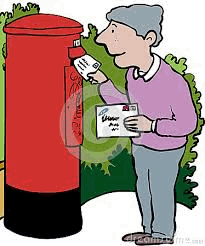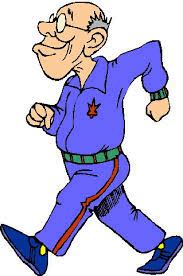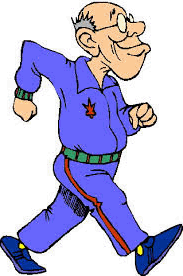Hucclecote Model Railway Show
At Hucclecote Methodist Church
June 2021
Federal Street Yard
Chris Sharp 2mm N gauge

They say a change is good as a rest which, in my case was about the changing of scale? My CV for modelling railways is probably not much different from that of most modellers. My introduction into the hobby was at the age of 8 via a second hand tin plate O gauge electric train set. German made and just a simple oval of track. My first change of scale was a couple of years later. I was fortunate to have an Aunt who worked for TRIANG and so began my conversion to more modern made trains in 00 gauge, unfortunately the downside is that some of my collection has suffered the ravages of time and the “wrong” type of plastic (on the rails!). Later in the 60's I discovered N gauge and started a German Railways layout but eventually a career in Royal Navy, marriage, children and the responsibilities that they bought with them drew me away to more important issues.
I came back to the hobby towards the end of my naval career returning again to N gauge. This meant I could take a portable micro layout with me. A small layout that when folded only measured 3 foot by 6 inches by 6 inches, which incidentally takes up little to no space in a naval clothes locker! As my skills improved I constructed several small layouts with the latest one being VINE STREET (Railway Modeller Oct 2013). In late 2006 I decided to move up a scale as I felt I needed a change in direction. As to the change, well after much teeth gnashing, research and armchair planning I settled on HO and specifically American railroads. I had also decided to venture into the use of DCC and sound fitted locos. During the research and planning stage it became very obvious that there was much to learn about American Railroads in fact it was akin to a crash course in the whole culture, history and operations of their railroads. The beauty of modelling American railroads is that you can if you wish too invent a railroad company along with its corporate colour scheme and general location.
Federal Street Yard was my first foray into HO modelling and was designed both for running at home and at exhibitions.
The History.
The City of Hereford is located somewhere on the edge of West Virginia and enjoys the linkage to the junction of two major road systems. Interstate 22 N/S and US Route 40 E/W. It also has a comprehensive rail system that links it to the rest of the United States. Hereford is in the heart of Jackson County and is surrounded by a pristine valley rich in natural wonders. It has always been the regional heart of activity. The city is also served by the Hereford and West Virginia Rail-road which first saw the light of day in July 1845 and today is still thriving as a small short line company. Hereford is also served by several major class one railroads such as Norfolk Southern (NS), Norfolk Western(NW), Burlington Northern and Western Maryland. The Canadian Pacific also has access rights. Federal Street Yard focuses on supplying various urban industries with raw materials and transporting the finished goods out. Commodities such as soya and wheat are also trans-shipped by rail. There is also a small rail repair facility for locos and freight cars. Also included is a team track for single car use. I now apologise to those who may now be cringing into their Beer mugs, but then like Hollywood I too can rewrite geography and history!
The layout
Federal Street Yard is a shelf style layout designed for switching (shunting) and is set in a flexible time period between the 1960s and 1980s. The original layout measured 9 foot by 15 inches and was divided into 3 sections of 3 feet each The size was dictated by the end wall of the garage (now my train room) and what would also fit into my car, however, I managed to extend it by another two and a half feet and was still able to transport it all in my car!
Track plan
When researching track plans you not only end up racking your brains but end up searching every publication, book or internet site to find a suitable track plan. In the end I have to admit that a British outline layout helped me to kick start a suitable design. Is that cheating or would it be considered plagiarism? Well many of our modelling authors are offering guidelines or advice on what is practicable, so in the end you choose what suits you best. I wanted a track layout that offered the most fun to operate but also entertained the visitors at exhibitions which, I believe I have achieved. One of the reasons for the extra board was not only to include more industries but also to give me a bigger fiddle yard.
Construction
The frame work for the layout is made from 2 by 1 inch timber topped with 5mm plywood with 12 inch high scenic back boards. The four boards are connected by dowel pins and suitcase latches with the boards sitting on top of 5 trestles. The wooden trestles are home made from timber recycled from an old bed frame. My woodworking skills are pretty agricultural but saying that the trestles and boards have never warped or failed me yet! Prior to track laying the boards are covered with cork sheet. The cork helps to deaden the noise level when running locos.
Wiring
Power to the layout is via two pin insulated plugs between each board. Power for the model lighting between each board is via multi pin plug connectors. The wiring is designed for DCC with a bus line running the full length of the boards. The connection to the DCC controller is via a multi pin plug connector at both the back and front of the layout. Like my woodworking skills I like to keep the electrics simple.
Track
The track is all Peco streamline Code75 with all the turnouts being medium radius electro frog with the exception of the short crossing which is dead frog. The use of a three way turnout allowed for space saving in what is a fairly compact layout. The track has insulated rail joiners at key points and droppers every twelve inches which insures a constant supply of power to the track.
The track plan was first drawn up using “Any-rail” software. This allows you to plan in the turnouts position in relation to baseboard joints and the wooden framework. Once the plan was completed I printed it off to fit an A4 sheet of paper. On this hard copy I could draw/doodle the wiring, buildings and the road ways that would be needed for the complete layout. This was then transferred back to the software programme. Again when I was happy that I had achieved the aim I printed out the track plan full size. Its at this point a suitable health warning is needed. Do not be surprised on how much paper is produced by this process! The sheets were then glued together to form the full size layout plan on paper. The saving grace of this process is that you now have an exact full sized track plan that when laid out on the boards allows you to accurately lay the track in the right position. This method also allows you to place locos and wagons on the track plan for a final check to ensure space and distance does work as you envisaged.
Before commencing the track laying the boards were first joined together and the paper plan lightly secured on top with drawing pins. As the track laying progressed and at suitable distances, the paper plan would be cut away leaving the track pinned down in the right position. The next stage was the track running over the baseboard joints. Copper clad sleepers were fabricated from a paxolin sheet and inserted at the joint edges after having carefully removed the plastic ties from the metal rails. Once in position and checked to be at the right hight they were pinned to the baseboard via holes made in the new sleepers with a small hand drill. The rails were then soldered to the copper clad sleepers ensuring that they were at the right distance before cutting through the rail thereby creating a separated but solid rail baseboard joint. The sleepers were lightly scored across the width to ensure the electrical isolation to each rail
Point control is by Seep point motors linked to Hornby stationery decoders. This handy little unit can take 4 turnouts, is simple to wire and easy to programme. Because I take the “keep it simples” approach I found wiring up very easy. Two wires to the bus lines and three wires for each turnout. Each stationery decoder has to be initiated individually so that means each decoder is separately wired up and programmed. The downside of this wiring process is that you can only programme one decoder at a time so that means they have to be disconnected prior to tackling the next one. When completed they can all be connected to the bus line. As the stationery decoder units are close to the turnout motors there is no need for miles of wiring beneath the boards. All the turnouts are controlled from the hand held throttle, but the real beauty of DCC is not having to include isolated sections to achieve cab control!
Once the track had been laid and prior to ballasting a rigorous programme of testing was carried out with any minor defects corrected. Once satisfied that all was well, ballasting could then take place.
he preparation of the track prior to ballasting follows the well documented route of ageing the track, laying ballast and then glueing it with diluted PVA and a drop or two of liquid soap. Although a monotonous task it is nether the less an important one. Ballasted track when done well is like having a well manicured lawn that looks right and is also pleasing to the eye. I use dried kiln sand for the drainage channels and larger gaps between running lines. Finally when the ballast has dried the track and turnouts were thoroughly cleaned with a track rubber. I also use surgical spirit to clean the tops of the rails prior to running any locos. Again the track is tested to iron out any wrinkles before the building are put in situ.
Kadee track laid magnets are place in strategic points to aid uncoupling. The delayed action ones allow the box cars/wagons to be propelled to there destination and magically released whilst the loco draws away.
DCC
DCC control is achieved by the Gauge Master Prodigy Advance 2 package. Marketed as an entry level control system I have found it exceptionally versatile and easy to use. I also use the Prodigy Advanced Wire Computer Interface which is linked into my PC. This gives me even more flexibility by effectively giving me another two cab control units plus the ability to control, read, programme and store information on each individual loco. Additionally route selection can be programmed which allows for multiple turnout selection on a planned route.
Buildings and Industries
The buildings are a mixture of kit, kit modules and scratch built models. The kit built buildings are all from the Walther’s Cornerstone range. The Blue Ridge Paper Company, Hereford Freight House and Southern Co-op are made from modules where you can construct buildings to the size and shape needed to fit in a specific location. The scratch built buildings are constructed from mounting card, spare windows and other add ons such as vent pipes and air con units.
Kaiser Plastics, Co-op Grain silos, Domino Sugar, Hardly – Able Manufacturing are made up from Walther’s Cornerstone kits. The Soya silos are large cardboard tubes wrapped in thin card to hide the spiralling effect of the card. I also built four extra silos from white plastic tubing to enlarge the grain facility. The two Purina Chow/seed buildings are free to download Scalescene prints one of which was enlarged to create a slightly longer building. Although these are 00 scaled buildings they do not look out of place on an HO layout. The small shed at the end of the larger building is another “Free-bee” from Railway Modeller appropriately painted to match the ageing woodwork of the building.
Dewey Cheetham & Howe Tri State Can Company and Schroeder Klein Groceries are scratch built using mounting card and spare bits from leftover kit parts. Walther’s are very generous with the spare bits in their kits which the Hardly – Able Manufacturing Company is a prime example. The Burlington Northern box car parked inside Schroeder Klein Groceries building has been cut in half in order to give the impression its actually in the building! The box cars coupling has been altered to prevent unintended coupling to another car. Several of the small ancillary buildings are also scratch built using slaters plastic card such as Southern Power & Electric sub station.
The grounded Caboose is an old Triang model from my collection and is 55 years old!
The signal cabin, gate crossing hut and plate layers hut and vehicle are all pre-built models which have been repainted.
I have installed lighting in some of the buildings and vehicles. The fire wagon has a flashing red light on the roof. I sourced the lighting unit from Maplins and utilised a smaller led for the hazard light. The Rail-road crossing lights also work and are controlled by a simple on/off switch. The hobos camp has a small fire that glows and flashes as well as the welders flashing blue arcing effect in the repair yard.
Locos, wagons and ancillary equipment
The diesel locos are products from Atlas (GP39-2)Bachman(GP35/GP50/GE 70 ton switcher)and Proto 2000 (GP30 High Hood). The rail freight box cars and other railroad vehicles are from Bachman, Walther’s, Athern and Accurail range. Some are ready made but there are a few kit built wagons amongst the stock. The snow plough is another modified Triang model which has been fitted with Kadee sprung trucks, repainted and given new decals.
Most of the locos and wagons have been retro fitted with Kadee No 5 couplers with the rest having the Bachman Eezee Mate uncouplers.
The ancillary equipment such as telegraph/power poles, power boxers, ground signals and turnout switches are from numerous American suppliers and are either white metal kits are plastic ready made units.
In conclusion
Federal Street was my first foray into DCC and has been and still is a joy to operate. Although I built the layout in 2006 it still gets regular outings to exhibitions. At an exhibition and as a one man band the layout is about the right size to present and operate during a 6 hour session. Federal Street Yard tends to be a loan wolf amongst British outline layouts an so does attract the attention of visitors. With numerous little cameos dispersed through out the yard it does hold the attraction of those viewing it, along with the slow movement of large locos going about their business.
and finally.....
To my wife who every summer has patiently allowed me to make a detour on our Cornish holiday to a great little shop in Bodmin who stocks nothing but American Railroad models and all the bits and pieces you could ever want! Bliss.




